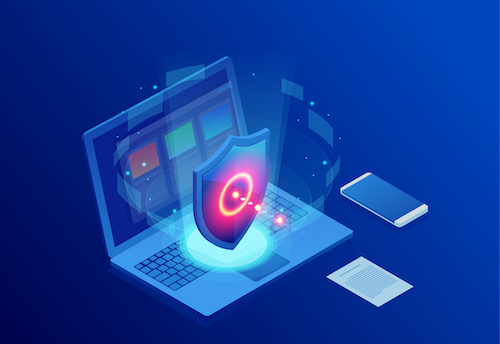Digital equity in the classroom goes far beyond the need to deliver internet connectivity and devices. All students need and deserve a safe, reliable, and adaptable edtech ecosystem to support and nurture their learning experience.
Behind the obvious laptops and countless other tech tools used by everyone in today’s schools sits what could arguably be labeled the least discussed aspect of K-12 technology: the vast software systems that nearly all schools use to store and update student data – including their identifying information. Everyone using these systems is impacted by the way in which users are required to log in, as well as interact with, cybersecurity precautions. It’s not energizing to discuss or even manage – but deploying it correctly can make all the difference for countless students.
Just as all students aren’t the same, their needs for entering and using these systems may vary greatly. Thus, if a district uses the same access process for all, the chance that gaps in digital equity exist is nearly certain. A fifth grader with special needs may face access and access confirmation processes that take away from instruction time in each class throughout the day. Furthermore, imagine facing those same hurdles every day and every year throughout a K-12 education.
Keeping in mind the sheer vulnerability of today’s internet connected devices and cloud-based apps, there’s a clear need for a resilient mixture of flexibility and protection that can prevent gaps in digital equity that have nothing to do with internet access, but rather, its actual use.
A Learning Environment that Safeguards and Adapts to the Individual
Establishing digital identities and then managing access in a secure, yet scalable and flexible way enables schools to safely and more easily cater to most unique needs. Unfortunately, many of the older legacy identity and access management systems (IAMs) were not designed to help combat the complex cyberthreats districts face today. That inevitably eats into instruction time and causes delays and inefficiencies impacting millions of students across the country.
Related:
3 ways the E-rate program helps level up learning
Growing ransomware threats require maximum data protection
Today’s more advanced IAM platforms can significantly reduce delays and help prevent data theft at the same time. Some of the most powerful and efficient benefits of a properly deployed IAM include:
- Multi-Factor Authentication – Approves or denies access rights and tailors authentication methods used based on risk level.
- Privileged Access Management – Reduces the risk of a security breach with comprehensive privileged access controls that decreases the number of users with multiple accounts.
- Automated Deprovisioning – Eliminates the risk of human error by automating user accounts and lifecycle management of all users including students, staff, and vendors.
By creating a digital identity for each person within the organization, it’s possible to consistently put students at the center of a school’s technology strategy. These digital identities help patterns to be noticed, including when changes should be made based on behavioral, demographic, academic and lifestyle information that’s stored. With direct access to this data, educators can create personalized learning environments that are tailored to the needs of each individual student
Minimizing the Load on Edtech and IT Teams
Achieving comprehensive IAM success definitely isn’t easy, as it may simply be a new concept for IT administrators who have worked with legacy systems for years. However, the beauty of digital identities is that it not only helps ensure digital equity, but it also helps those same IT administrators to more easily scale and better serve both educators and students.
Classroom digital resources can also connect to a single portal that IT controls, with users accessing everything they need through, for example, one username and password. Furthermore, IT teams can benefit from promoting security risk management as everyone’s responsibility. By being actively trained regarding possible vulnerabilities, students can become more “security aware” in their password strength and how to safeguard their unique digital footprints.
In the end, these foundational IAM “gateways” to a school’s systems are much more than a checkbox on an IT checklist–they serve as a notable enabler for so much in the education ecosystem. Indeed, digital equity can be better achieved by marrying flexibility with cybersecurity. After all, IAMs are the sentinel that enables access in the first place – and it’s easy to overlook the impact (both positive and negative) that they can have on millions of students, teachers, and administrators.
- 4 ways to encourage play in education - April 25, 2024
- CoSN IT Leader Spotlight: Lisa Higgins - April 25, 2024
- It’s time to pay student teachers - April 25, 2024


